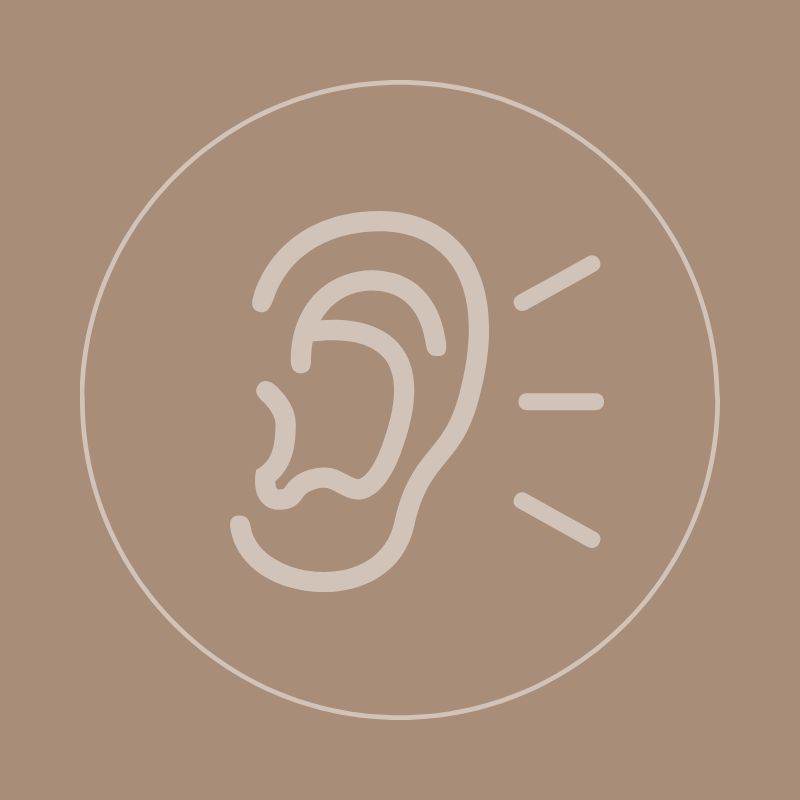Our senses are how we experience the world, but we don’t all experience senses in the same way. Autistic people often have sensory sensitivities, also known as sensory differences. This means they might experience a sense differently to someone else, and either be hypersensitive (over-sensitive) or hyposensitive (under-sensitive).
When it comes to sensory differences, being over or under-sensitive refers to how much our senses respond to a particular stimulus. With hypersensitivity (also known as sensory overload), someone might feel overstimulation or over-awareness of a sense, such as sounds being too loud, lights being too bright, and smells feeling overly strong. This happens because that person’s senses are reacting more strongly to those things. But where someone is hyposensitive (under-sensitive), their senses react less strongly so they might seek out sensory experiences, like wanting to touch, smell, or taste things.
Understanding and working with your own sensory differences can be a key part of managing wellbeing. Some sensitivities are easy to recognise, while others can be more subtle. To help illustrate how they might show up, below are some examples for each sense.
Examples of sensitivities of the main senses
Touch (tactile sensitivity)

Hypersensitivity: May dislike sensations caused by everyday activities like taking a shower, brushing teeth, getting a haircut, and eating foods of certain textures.
Hyposensitivity: May crave touch like hugging tightly, wearing tight clothes, bumping, stroking, rubbing, or feeling physical pressure.
Taste (gustatory sensitivity)

Hypersensitivity: May only eat specific foods, have difficulties with eating patterns, and gag or vomit over some foods or drinks.
Hyposensitivity: Might try to eat everything including non-edible things (known as Pica), lick or mouth foods and objects, or regurgitate food to re-taste it.
Smell (olfactory sensitivity)

Hypersensitivity: May have difficulties with going to the toilet, run away from certain smells, and avoid people with specific smelling food or beauty products.
Hyposensitivity: Might enjoy smelling themselves or other people, want to play with faeces, or repeatedly smell certain foods/objects/clothes/people.
Sight (visual sensitivity)

Hypersensitivity: May dislike bright lights/sunshine/flashing lights, want to wear darkened glasses, prefer to look down, or find that certain colours cause strong reactions.
Hyposensitivity: May seek out lights, enjoy coloured lights such as fairy lights, or like reflective surfaces.
Sound (auditory sensitivity)

Hypersensitivity: Might dislike loud noises or noisy environments, cover ears in loud places or moments, make their own noise to block out other sound, or be easily distracted by noise.
Hyposensitivity: May prefer noisy places, enjoy the sound of washing machines and dryers, like vibrations from speakers, or tap on surfaces to create sound.
Examples of lesser-known sensitivities
While the above senses are commonly spoken about, there are also lesser-known sensory sensitivities including vestibular sensitivity, interoceptive sensitivity, and proprioceptive sensitivity.
Vestibular sensitivity
Our vestibular system is our sense of balance and motion, and how we detect movement and changes in the position of our head. For example, we may feel motion sickness when travelling or sense the movement of lifts going up and down. Our vestibular system can also affect spatial awareness, such as how close we are to someone or something else.

Hypersensitivity: May get travel sick, dislike theme park rides, avoid using lifts, or want to sit out of physical activity such as sport.
Hyposensitivity: Might seem clumsy, enjoy spinning around, love fast moving equipment, not recognise personal space, or show a reduced sense of physical danger.
Proprioceptive sensitivity
Proprioception is our sense of where our body is physically, including the position of our limbs. It is how we detect our body’s location and movement, and how we perceive pressure or force when we use our muscles.

Hypersensitivity: May like to place the body in different positions, or might not press hard enough when writing or drawing.
Hyposensitivity: Might like to lean or press against people or objects, spend time rocking back and forth, or press too hard when writing or drawing.
Interoceptive sensitivity
Interoception is our ability to detect our own inner state. It relates to internal sensations such as thirst, hunger, pain, body temperature, and the sense of bodily functions like needing to use the toilet.

Hypersensitivity: May become overheated and want to remove clothes, or get upset about feeling cold and want to wear lots of layers.
Hyposensitivity: Might not detect bodily needs such as hunger or thirst, or may not realise they are experiencing pain or discomfort.
Take away tips
Play detective
Managing sensory sensitivities might involve a bit of detective work to learn exactly what you like and need. For example, keeping a journal and noting down what was happening and where you were just before any moments of anxiety or overload. This could give clues into what you were sensing. You might notice you often feel anxious in certain situations or after particular experiences, which could indicate a sensory sensitivity.
Keep it simple
Think about whether there are any simple adjustments you can make to something that is triggering a sensitivity. If you’re sensitive to clothes, can you get bigger or smaller clothes that feel better? If you don’t like clothing labels, cut them off. If a light is too bright, can you move away from it? Even simple adjustments can add up to feeling better day-to-day.
Ask for reasonable adjustments
If something at work or school causes you a sensory issue, don’t be afraid to request adjustments to help with it. Whether it’s lighting that bothers you, sound in a shared space, or even smells like other people’s lunch. It is reasonable to request support, whether that means a few adjustments to your workspace, or finding an alternative area for you to use when needed.
More tips and information
More insights and tips are available in the Sensory Sensitivities episode of Divergent Voices.





